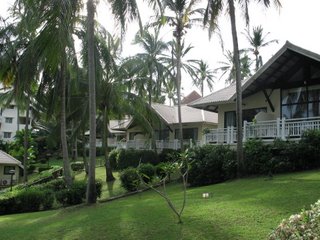Weather has dominated the hearts and minds of viticulturists and wine makers in the wine growing regions in the south and east of the country this vintage.
Our region has already recorded a huge 446mm of rain this year over 39 days compared to just 167mm last year. The annual average for this period is 295mm.
More than half of that rain has been recorded since the beginning of March when 242mm fell, including 101mm on 1st March and another 45mm the following day.
The Thursday before last, the region copped another 67mm, and more rain is forecast through the weekend and into the next week.
Our district has also experienced one of its coolest summers on record, with an average temperature of just 22.4 degrees.
Summer got off to a relatively chilly start with the average December temperature reaching just 20.8 degrees.
The January average temperature was a warmer 24 degrees but still well below normal.
February's average temperature was only 22.5 degrees for what is usually one of the hottest months of the year.
From 1st December 2011 until 29th February 2012, the thermometer barely reached 30 degrees, with the mercury peaking at 33.1 degrees on January 30. Really unheard of.
So what does this all mean to the grape growing industry?
Lots of rain is bad news especially at the grape ripening stage.
The vines themselves are subjected to fungal disease pressures such as downy and powdery mildew. This can normally be ameliorated by a regular spray regime. But with continual rain, this can be difficult to organize at the desired time with the rain fastness of sprays as well as their length of effectiveness limited. Also soggy vineyards can limit tractor access.
Vines absorb moisture through their roots and 'pass it on' to the berries. This dilutes the juice and desired levels of ripeness (sugar levels in the grape juice) are hard to achieve. Also grape berries can split from too much moisture encouraging disease eg. botrytis.

Cool temperatures are not such a problem. In fact cool temperatures encourage slower ripening which improves grape juice quality such as varietal flavour development and acid stability.
But in our region cool temperatures usually means cloudy days. Cloudy days mean a lack of photosynthesis and a resultant lack of ripening.
As you have already read in a previous post my tardiness in not tailoring my spray regime to this season's conditions has lead to the loss of the Tempranillo and Semillon crop due to powdery mildew.
It would appear that the Pinot Noir has met the same fate.
The Cabernet Sauvignon however sees to be standing up well against any disease pressure but is not ripening due to the rainfall. Before we headed off to Melbourne it was at 10 deg Baume. Two weeks later it was still 10.
The vines still have plenty of leaf so with a little fine sunny weather we may achieve our target of 12+Baume and be able to pick sometime in April. If not it can always be made into Rose', or even left on the vine.
We live in hope.
(For the metrically challenged, 1inch = 25mm and Deg Celsius can be converted into Fahrenheit here. And Baume = Brix/1.8)




















No comments:
Post a Comment